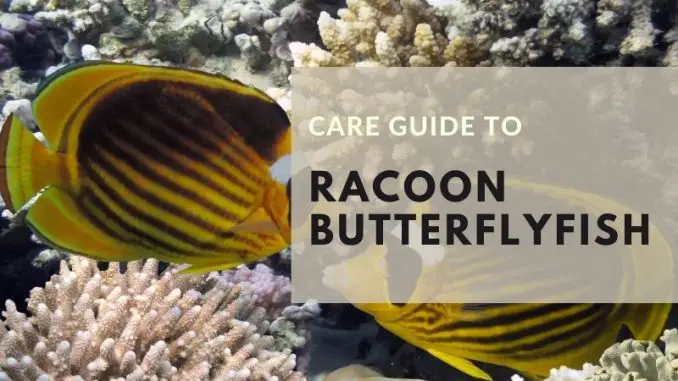
The raccoon butterflyfish is a saltwater species of the butterflyfish family. There are around 129 species of butterflyfish, and the raccoon species has yellow, white, and black colors similar to other fish in its family.
The raccoon butterflyfish’s most unique feature is the bold black and white markings around its face, resembling the markings of a raccoon.
These fish are popular with aquarists due to their unique appearance and their low care needs, despite needing to be housed in a bigger tank than most other saltwater fish.
TABLE OF CONTENTS
Raccoon Butterflyfish Facts & Overview
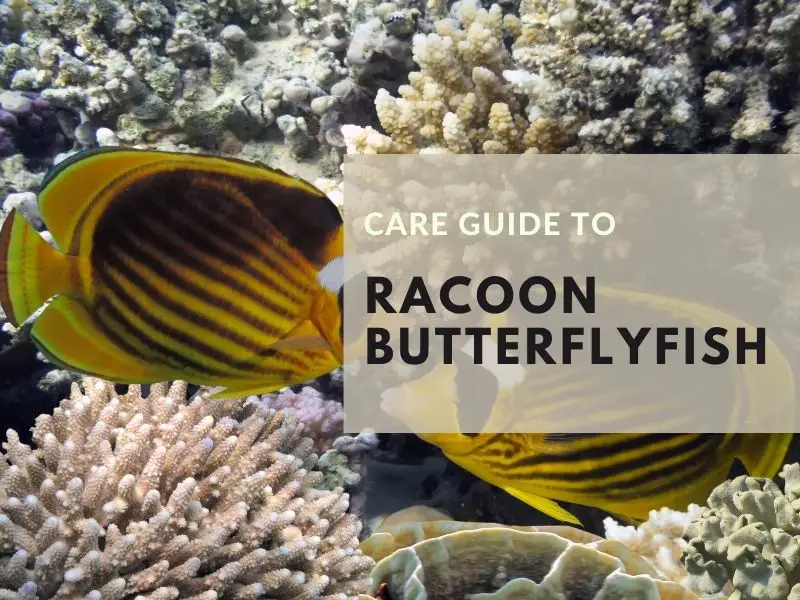
| Scientific name: | Chaetodon lunula |
| Common names: | Raccoon butterflyfish, raccoon coralfish, crescent-masked butterflyfish, halfmoon butterflyfish, moon butterflyfish, lunule butterflyfish, and red-striped butterflyfish |
| Distribution: | Indo-Pacific regions, including Hawaii, Japan, East Africa, and Fiji. Eastern Pacific regions, including the Galapagos Islands and Costa Rica |
| Size: | 6–8 inches |
| Life expectancy: | 5–7 years |
| Color: | Yellow-orange, with black and white patches |
| Diet: | Omnivore |
| Temperament: | Peaceful |
| Minimum tank size: | 75 gallons |
| Temperature: | 74–80°F (22–27°C) |
| pH: | 8.2–8.4 |
| Hardness: | 5–15 dGH |
| Care level: | Easy |
| Breeding: | Egg scatterer |
Origin & Distribution
The raccoon butterflyfish is commonly found in regions across the Indo-Pacific, including Hawaii, Japan, East Africa, and Fiji. The fish is also found in Eastern Pacific regions, including the Galapagos Islands, Ecuador, and Cocos Islands in Costa Rica.
The natural habitat of the raccoon butterflyfish is various types of reefs, including seaweed reefs, flat reefs, slope reefs, and fringe reefs. Racoon butterflyfish prefer to live in water depths of 98 feet or less, in small groups of up to 20 fish.
Adult Size & Lifespan
Fully-grown raccoon butterflyfish reach 6–8 inches long. Some males are larger than females.
The average lifespan of this species is 5–7 years. In a suitable captive environment, raccoon butterflyfish live up to 10 years.
Availability
Raccoon butterflyfish are expensive fish. The average cost of a raccoon butterflyfish is $60–$90.
Raccoon butterflyfish aren’t as abundant as other saltwater fish because breeding butterflyfish in captivity is difficult. The fish are more widely available online than in local stores.
Reputable online stores selling online raccoon butterflyfish are:
Appearance & Behavior

The raccoon butterflyfish is a medium-sized, oval-shaped fish with a peaceful personality and good compatibility with other fish.
Colors, Patterns, Fins, and Sex Differences
Raccoon butterflyfish have unusually large eyes and distinct masked faces that resemble the markings of a raccoon. This species is a bright, bold, and colorful fish, with a yellow-orange body with white, black, and yellow markings around the eyes, and a black spot near the tail.
The body of the raccoon butterflyfish is compressed and oval-shaped, with a truncated tail fin and a continuous dorsal fin from head to tail. These fish have short, protruding snouts and small mouths.
Juvenile raccoon butterflyfish aren’t as boldly colored as adults, and juveniles don’t have the middle black band. There’s no distinguishable difference in appearance between male and female raccoon butterflyfish.
Raccoon butterflyfish make their colors brighter or dimmer to blend in with their surroundings. The fish’s colors fade during the nighttime to blend in with the coral reefs, and the colors become brighter when the fish feels antagonized.
Typical Behavior
Raccoon butterflyfish are peaceful and behave sociably with other fish species. However, the species is known for its territorial behaviors, including chasing and nipping, around fish of its own kind in captive environments.
During the day, raccoon butterflyfish stay mostly hidden, and at night, the fish emerge from their caves and corals to hunt for food. In captivity, the fish can be trained to eat during the day, and are happy to explore tanks with low lighting at any time of the day.
Raccoon Butterflyfish Care & Tank Requirements
Caring for raccoon butterflyfish is easy, as long as you provide the right tank setup for this saltwater fish species. Raccoon butterflyfish need a coral-based tank, excellent filtration, and highly oxygenated water. The fish follow a carnivorous diet.
Habitat and Tank Requirements
The raccoon butterflyfish’s natural habitat is coral reefs, but the fish is known to destroy coral. House the raccoon butterflyfish in a tank with a fish-only-with-live-rock (FOWLR) aquascape, consisting of dead coral.
Ensure your raccoon butterflyfish tank is at least 75 gallons for a single fish. Raccoon butterflyfish become stressed when they’re housed in crowded tanks, and they need plenty of space to swim.
The best substrate for a raccoon butterflyfish tank is fine sugar sand because it’s easy to clean and keeps the ammonia and nitrate levels down. Add between 1 and 5 inches of substrate to the bottom of the tank.
Raccoon butterflyfish need lots of hiding places and places to claim as their territories, such as rocks and caves. Anubias and bolbitis are hardy, sturdy plants for a raccoon butterflyfish tank, and floating aquarium plants like Java moss are other good plants to consider.
Tank Conditions
The ideal tank conditions for raccoon butterflyfish are:
| Water type: | Slightly alkaline, highly oxygenated saltwater |
| Tank size: | Minimum 75 gallons, or 150 gallons for two butterflyfish |
| Water temperature: | 74–80°F |
| Substrate: | Fine sugar sand |
| Tank setup: | Rocks, caves, plants |
| Acidity: | 8.2–8.4 pH |
| Water hardness: | 5–15 dGH |
| Filter: | Yes, clean water conditions are essential for a butterflyfish tank, and a strong filter is required |
| Bubbler: | Yes, to oxygenate the tank |
| Lighting: | Yes, raccoon butterflyfish prefer medium tank lighting |
| Water heater: | Yes, to keep the water warm |
Raccoon butterflyfish are sensitive to changes in water chemistry, so exceptional water quality is essential to prevent stress and disease.
The most important aspect of caring for this fish is keeping the tank clean by performing a 10–15% partial water change every two weeks.
Disease
Raccoon butterflyfish are prone to several common saltwater aquarium diseases:
Marine Ich
Marine or saltwater ich, or white spot disease, is caused by a protozoan called Cryptocaryon irritans, and is characterized by white spots on the fish’s scales. Fish with marine ich experience skin irritation, appear lethargic, and lose their appetites. Severe cases of marine ich cause respiratory distress and death.
Treat marine ICH by moving the affected fish to a quarantine tank and adding copper-based medications to the tank.
Velvet
Marine velvet is a disease caused by a single-celled dinoflagellate, resulting in dust-like white sprinkles all over the fish’s body. Velvet looks similar to ich, but velvet spots are smaller and rounder than ich spots. Fish with velvet lose their appetites, act reclusive, and exhibit heavy breathing. It’s common for fish with velvet to swim against the flow of the tank’s water pump.
Treat velvet with a chloroquine phosphate or copper medication, as recommended by your veterinarian.
Uronema Marinum
Uronema marinum is a ciliate parasite that lives, feeds, and reproduces on saltwater fish. Fish with Uronema marinum have bloody, ulcer-like wounds on their bodies and high mucus formation on their scales. Weakened fish are more likely to be affected by Uronema marinum than healthy fish, so ensuring clean, spacious tank conditions greatly reduces the likelihood of this parasite infecting fish.
Treat Uronema marinum with antibacterial drugs recommended by your veterinarian.
Raccoon butterflyfish are intolerant to certain medications, so maintaining exceptional water conditions is essential to prevent disease in the fish.
Tank Mates

Raccoon butterflyfish are compatible with most saltwater fish species, but they shouldn’t be housed with other raccoon butterflyfish unless the tank is big enough to give the fish their own territories.
Great tank mates for raccoon butterflyfish are:
- Cardinalfish
- Angelfish
- Fairy basslets
- Gobies
- Tilefish
- Pomacanthus
- Holacanthus
Avoid housing raccoon butterflyfish with small, territorial fish, like triggerfish, scorpionfish, and clownfish, and invertebrates like shrimp and snails, which raccoon butterflyfish are known to eat.
Diet and Feeding
In the wild, raccoon butterflyfish eat algae, coral polyps, and invertebrates like tubeworms and nudibranchs. Provide a similar mix of foods for the fish in captivity.
Getting a raccoon butterflyfish to eat can be challenging at first. Try enticing the fish’s appetite with a small anemone, or live or frozen fish cubes.
Once the raccoon butterflyfish has adjusted to its new environment, provide a daily diet of live or frozen invertebrates, like brine shrimp, crab, cockles, and squid. Dried seaweed and algae wafers are good plant-based foods for raccoon butterflyfish.
Supplement the fish’s diet with high-quality, vitamin- and mineral-enriched fish flakes designed for angel and butterflyfish.
Feed raccoon butterflyfish a pinch of food three times a day, rotating the type of food to vary the fish’s diet. After the fish have finished eating, remove any leftover food to prevent the tank from getting dirty.
Breeding
Breeding raccoon butterflyfish at home is difficult — even some professional breeders are unable to successfully breed the fish in captivity. Raccoon butterflyfish reach sexual maturity when they’re about one year old.
In the wild, here’s what happens when raccoon butterflyfish breed:
- An interested male and female raccoon butterflyfish pair up and move into the shelter of a cave or coral reef to begin the breeding process.
- When the female detects that the tide and the lunar cycle are right for egg-laying, she scatters her eggs in the water.
- The male fertilizes the eggs, then the eggs are taken away by the current, where they become part of the planktonic water column.
- The eggs hatch after about seven days. In a post-larval state, the fry are built to survive without parental care and have bony plates on their bodies to protect them from the elements.
Attempting to breed raccoon butterflyfish is fine, but be aware that you’re unlikely to see results, and the fish may bully one another to death.
Should You Get a Raccoon Butterflyfish for Your Aquarium?
Raccoon butterflyfish are beautiful, interesting fish. You should get a raccoon butterflyfish if you have a large, established tank, with plenty of open water and hiding space, and you’re prepared to keep the tank clean with regular water changes and high-quality filtration.
Don’t get a raccoon butterflyfish if you struggle to maintain your tank’s water parameters, or your tank contains territorial fish that are known to cause conflict with butterflyfish.
Despite their need for a large, consistently clean tank, raccoon butterflyfish bring a bright pop of color and plenty of entertainment to a community saltwater tank.

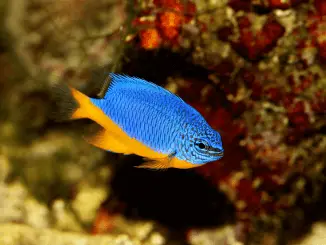
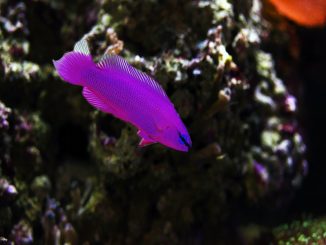
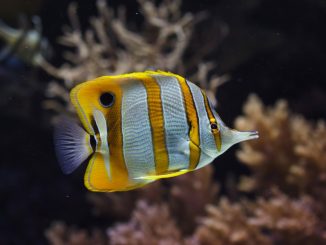
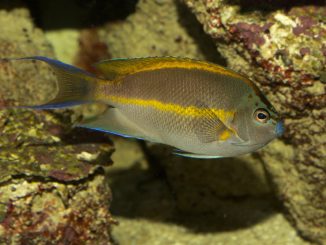
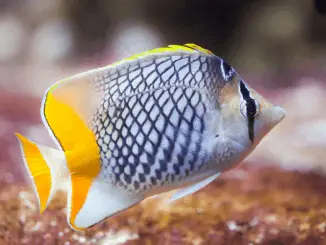
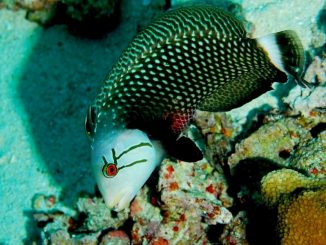
Be the first to comment